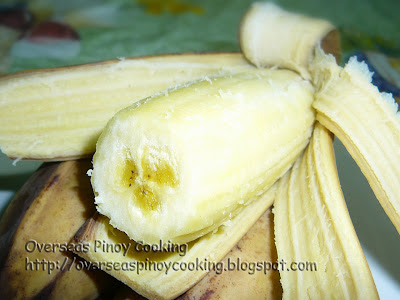GINATAANG SANTOL, SINANTOL, Walang Gisa-gisa, Traditional Cooking Method
GINATAANG SANTOL, SINANTOL, Walang Gisa-gisa, Traditional Cooking Method
GINATAANG SANTOL or SINANTOL is one of the more popular recipes of Overseas Pinoy Cooking.
Today I am sharing a cooking video of that traditional SINATOL RECIPE post.
The title indicated that there is no sautéing involved “Walang Gisa-gisa Cooking Method”
Similar to any traditional vegetable ginataang Bicol style , our Sinantol was cooked without sautéing.
I have always thought that Sinantol or Sinanatolan originated in Laguna or Quezon ,Southern Tagalog, hence the Tagalog name of the dish.
The traditional preparation of the santol should be chopped, not to fine but not diced, how-ever that would require a lot of muscle work and the chopped santol meats will oxidize faster, resulting a dark brown color, on our Overseas Pinoy Cooking recipe, I coarsely grated the santol meat, I use the coarse teeth of the hand grate tool, there by leaving a still meaty santol meat.
Today I used a food processor with chop option, I have wished the texture should have been coarser, but at least I have save time and work.
I like my Sinantol have more texture, I could not imagine the dish with very fine or smooth texture, it would be similar already to a sauce textured dish.
I also wanted to retain some of the sourness of the fruit, all I did was rinse the santol meat twice, then squeeze out the juices as hard as I could, but not super dry.
To maintain the santol meat color as creamy as possible, a have added salt during the chop/blending process.
I wanted also my sinantol with that creamy coconut milk and not too oily.
Please write or place your comment should you have something to add.
Below are the actual write-ups and recipe of out Ginataang Santol, Sinantol post from Overseas Pinoy cooking.
Ginataang Santol, Sinantol.
Some of our readers may have had Ginataan Santol, specifically our readers who are ginataan loving Bikolano. If you are wondering how Ginataang Santol or Sinantol is cooked, don’t be intimidated. Except for the grating of the santol meat, cooking is fairly easy. Similar to any typical vegetable ginataang Bicol style there is no sautéing involve. The aromatics are initially boiled with half of the coconut milk, then all the other ingredients are added and let cook all together until done, the remaining half of the coconut milk is added during the final stages of cooking.
Here is my simple version of Ginataang Santol, Sinantol.
Ingredients:
3-4 pieces medium sized santol
250 grams pork belly, cut into strips
250 grams medium size shrimp, shelled
3 cups coconut milk
2 medium size onion, peeled, chopped
1/2 head garlic, peeled, crushed, chopped
2-3 thumb sized ginger, cut into thin strips
1 stalk lemongrass, trimmed, crushed
2 tbsp. bagoong alamang
2-3 pieces whole long green or red chili
2-3 pieces hot chili or long green/red chili, chopped
salt
Cooking procedure:
Skin each santol, do not cut, and immediately place in a big bowl with cold water. Now using the course blades of a cheese grater, Grate the meat of each santol, letting the gated santol meat drop on the same bowl with cold water, this will prevent the santol meat from oxidation or becoming dark, discard the santol seeds. Let the grated santol meat soak in the water until ready to cook.
In a medium sized sauce pan, pour about 2 cups of water, then add in 1 cup of the coconut milk. Add in the onion, garlic, ginger, pork belly, bagoong alamang, tanglad, bring to a boil and stirring constantly to avoid curdling, simmer for 2 to 3 minutes. Add the santol and continue to cook for 15 to 20 minutes, stirring regularly until most of the liquid has evaporated. Season with salt to taste. Now add in the shrimp, the remaining coconut milk, the chilies, continue to cook for another 10 to 15 minutes or until the liquid has turned to an oily sauce. Serve hot with a lot of rice.



Comments
Post a Comment
Thanks for visiting!
You Like the post?
Have anything to say or share?
What's in your mind?
Place your comment or reaction now.
Don't forget to write your name...